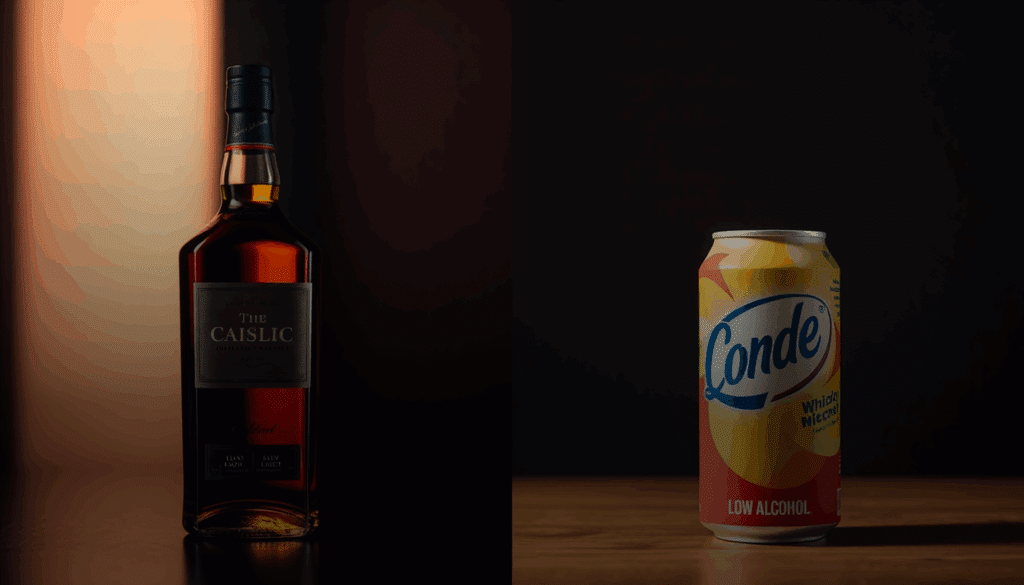The global beverage alcohol landscape is facing a pivotal moment. Recent reports from The Drinks Business, Beverage Industry, and Reuters suggest that shifting consumer behaviours, macroeconomic headwinds, and emerging regulatory tensions are collectively reshaping the future of wine and spirits. These developments point to a broader transformation, one where premiumisation meets pragmatism, and moderation takes centre stage.
From Peaks to Pressure, Spirits Market Shows Cracks
According to The Drinks Business, Edrington, maker of The Macallan, has seen a 10% drop in core revenue and a 28% dip in profits, reflecting a marked cooling in global demand for premium spirits. While The Macallan posted growth in markets like China, Japan, and South Korea, the company has divested from mainstream brands like The Famous Grouse to double down on its ultra-premium strategy. CEO Scott McCroskie cited a “hostile trading environment” and cautioned against expecting top-line growth in the near term.
Meanwhile, Beverage Industry reports that the U.S. wine sector continues to struggle, with table wine volume down 4.8% and sparkling wine sales also falling. Younger consumers, particularly Gen Z legal drinking age (LDA) households, are fuelling a shift toward lower-ABV, zero-proof, and flavour-forward offerings. While non-alcoholic wine remains niche, it saw 41% dollar growth in 2024. Similarly, premium boxed wines and new varietals like Tempranillo and Ganache are resonating with younger demographics seeking quality and convenience.
Spirits, however, show a more nuanced trajectory. Total U.S. spirits sales grew 2%, buoyed by premixed cocktails (up 27.6%) and tequila (up 3%). RTD (ready-to-drink) formats and premium craft offerings remain key growth drivers, though analysts warn that even this category is not immune to moderation trends, economic pressures, and consumer preference for authenticity and health-conscious options.
Externally, Reuters highlights geopolitical volatility in trade. While China has exempted key EU cognac producers from new tariffs, others face duties of up to 34.9%. SpiritsEUROPE has urged broader relief, warning that partial exemptions risk escalating trade tensions, another headwind for global spirits growth.
Where the Industry Goes Next
Across both wine and spirits, three clear trends are emerging:
- Moderation is the new mainstream. Gen Z consumers are reducing alcohol intake, favouring low-ABV and zero-proof options. This is no longer a fringe behaviour, non-alcohol spirits saw 99% growth last year, and adult non-alcoholic products are nearing $1 billion in sales.
- Premiumisation persists, but with limits. While demand remains strong for high-end tequila, whisky, and craft spirits, economic uncertainty is encouraging a hybrid behaviour: premium splurges for special occasions, value purchases for everyday use. Wines priced between $10-25 and boxed premium formats are outperforming both ultra-luxury and low-cost segments.
- Trade risks threaten stability. As seen with EU brandy exports to China, fragmented regulations and retaliatory tariffs could disrupt category growth. Brands reliant on international trade, especially in high-end spirits, face increased exposure to geopolitical shifts.
Looking Ahead… Who Will Lead the Next Growth Curve
The wine and spirits industry is undergoing a structural recalibration. Premiumisation will continue, but it must coexist with rising moderation, economic caution, and shifting global trade dynamics. Brands that adapt, by investing in functional innovation, sustainable packaging, and hybrid portfolios, will be best positioned to thrive.
By mid-2026, we expect low- and no-alcohol products to account for at least 5% of total category SKUs across major retailers, with RTD formats capturing over 15% of new product launches in spirits. Premium boxed wine and craft RTDs will dominate growth, while ultra-premium segments may plateau without significant experiential or brand story differentiation.
